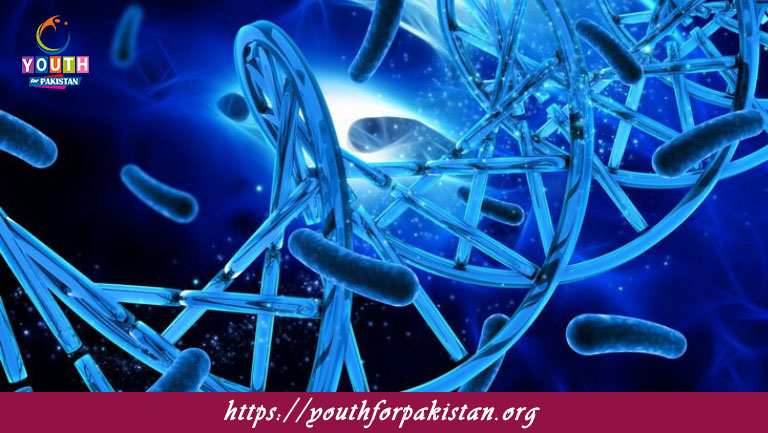Enzyme Inhibition MDCAT Quiz with Answers

Enzyme Inhibition MDCAT Quiz: Enzyme inhibition is an important concept in biochemistry, explaining how some substances reduce or block the activities of enzymes. Understanding the mechanisms of enzyme inhibition is very critical in preparing for the MDCAT, specifically in the areas of biochemistry and pharmacology. Practicing with an MDCAT Quiz deepens your knowledge regarding enzyme inhibitors and their effects on metabolic processes.
Types of Enzyme Inhibition
There are two general categories of enzyme inhibition: competitive inhibition and non-competitive inhibition.
Competitive Inhibition: In competitive inhibition, the inhibitor molecule and substrate compete for binding to the active site of the enzyme. The inhibitor is structurally similar to the substrate and can block the enzyme from catalyzing the reaction. However, increasing the concentration of the substrate can overcome the inhibition since it increases the chances of the substrate binding to the active site.
Non-Competitive Inhibition: The inhibitor binds to an allosteric site of the enzyme in the case of non-competitive inhibition. This binding results in a change in the conformation of the enzyme; therefore, the enzyme’s ability to catalyze the reaction is decreased even if the substrate is bound. The substrate’s increasing concentration cannot overcome this inhibition.
MDCAT Quiz on Enzyme Inhibition
Strengthen your preparation with an MDCAT Quiz that covers enzyme inhibition. This quiz will test your understanding of both competitive and non-competitive inhibition, including the molecular mechanisms behind them and their effects on enzyme function. Regular practice with such quizzes will make sure that you are always prepared to answer related questions during your MDCAT exams.
Free Flashcards for Enzyme Inhibition EN
Reinforce your learning with Free Flashcards dedicated to enzyme inhibition. These flashcards will help you memorize key concepts such as the difference between competitive and non-competitive inhibition, examples of inhibitors, and their effects on enzyme activity. With frequent use, the use of these flashcards will improve retention and recall, thus helping you to perform confidently in your MDCAT exam.
Mastering enzyme inhibition is critical to MDCAT success, especially in metabolic control and pharmacology. You can flashcards and quizzes within your study routine to improve your understanding, retain key concepts, and be well-prepared for related questions in your exams.

The process by which an inhibitor binds to the enzyme's active site is called ________.
Competitive inhibition

________ inhibition occurs when an inhibitor binds to a site other than the enzyme's active site.
Non-competitive inhibition

The type of inhibition where the inhibitor binds to a site other than the active site is called ________.
Allosteric inhibition

Inhibitors that bind to the enzyme at a location away from the active site are called ________.
Allosteric inhibitors

________ inhibition results in a change in the shape of the enzyme's active site.
Non-competitive inhibition

________ inhibition decreases the Vmax of the enzyme but does not affect Km.
Non-competitive inhibition

A molecule that resembles the substrate and competes for binding to the enzyme's active site is called ________.
Competitive inhibitor

________ inhibitors can permanently deactivate enzymes by binding covalently to the enzyme.
Irreversible inhibitors

________ inhibition occurs when an inhibitor binds to a site other than the active site and changes the enzyme’s shape.
Non-competitive inhibition

The binding of an inhibitor to an enzyme at the active site is a characteristic of ________.
Competitive inhibition

________ inhibition is characterized by the inhibitor binding to the enzyme-substrate complex.
Uncompetitive inhibition

In ________ inhibition, increasing substrate concentration cannot overcome inhibition.
Non-competitive inhibition

The irreversible inhibition of acetylcholinesterase by organophosphates is an example of ________.
Irreversible inhibition

The inhibitor that binds to the enzyme-substrate complex is called a ________.
Uncompetitive inhibitor

A molecule that binds to an enzyme and prevents its normal function by altering the enzyme's structure is known as a ________.
Inhibitor

The primary effect of competitive inhibition is to ________ the enzyme’s affinity for its substrate.
Decrease

The presence of a ________ inhibitor can be overcome by increasing the substrate concentration.
Competitive inhibitor

An example of a competitive inhibitor for the enzyme thymidylate synthase is ________.
5-fluorouracil

The inhibition of enzyme activity by a substance that binds to a site other than the active site is called ________.
Allosteric inhibition

________ inhibition reduces the rate of enzyme catalysis without affecting substrate binding.
Non-competitive inhibition

The type of inhibitor that binds covalently to the enzyme and permanently inactivates it is called ________.
Irreversible inhibitor

A ________ inhibitor binds to the enzyme-substrate complex and decreases the enzyme's catalytic efficiency.
Uncompetitive inhibitor
Experience the real exam environment with our expertly designed collection of over 25,000 MCQs MDCAT Mock Tests.





